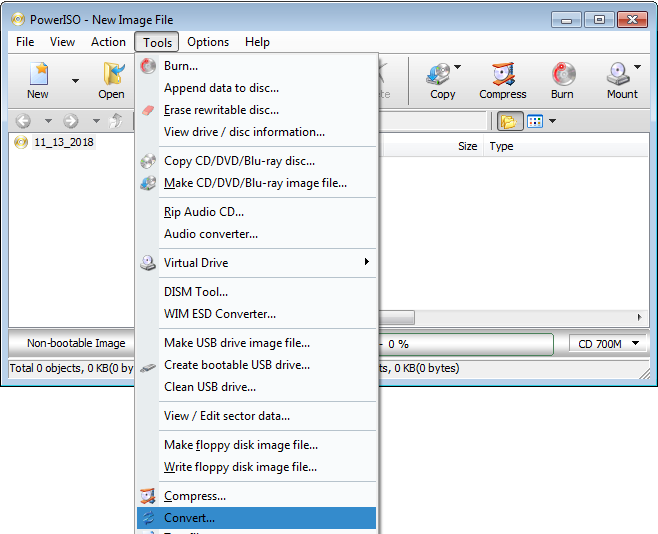
Compress the ECM file (i.e. Filename.bin.ecm) using your favorite compression program (i.e. Back up, transmit via Internet, or whatever you normally do with CD images! Back up, transmit via Internet, or whatever you normally do with CD images! Mac users interested in Ecm to bin converter generally download: ECM 1.0 Free The ECM format allows you to reduce the size of a typical CD image file (CCD, NRG, CDI, BIN. This BIN File Opener software is primarily used to convert image formats from one into another. But it can also be used to open and extract BIN files as well. In the first tab, which says file extract/convert to ISO, browse for your BIN file on the source image/archive file text field. The ECM lets users prepare CD image files (such as BIN, CDI, NRG, CCD, or similar) so that they'll compress far better in programs like WinRAR. The ecm file contains processed disk image. The ECM compression format is often used to compress ISO disk images with Sony Playstation 1 video games.

| Name | BIN |
| Full name | BIN, Generic Binary File |
| File extension | .bin |
| MIME type | application/x-binary |
| Developed by | Windows, Macintosh |
| Type of format | System |
| Description | BIN (Binary files) is a non-text computer file. Data is encoded with binary code instead of text for storage and processing. Some of the coding can be translated or interpreted into text while the rest is for formatting and other useful functional features. Older Microsoft Word documents work in binary. The BIN file extension often refers to CD disk images. Binary data can be translated into plain text to prevent the code from trying to execute functions. This allows the sending, receiving, and downloading of BIN files. Hex editors are very useful for viewing of binary sequences but text editors can be used as well. |
| Technical details | Files with the BIN extension usually look like junk when viewed directly with a text editor. Without knowledge of which portion of ASCII code is crucial for the file or which program to open the file in, the files are not very useful. These files often contain executable code and data programs that are required by various OS’s for the starting of a program. Binary digits (bits) are grouped in 8-character groups and used to interpret something other than numbers and letters by different programs. This allows images, text, sound, and other files (compressed) to be found in a BIN file. Headers can contain metadata used by the program to interpret data and identify format. |
| Associated programs | AVG, CDRWin, Linux |
| Wiki | https://en.wikipedia.org/wiki/Binary_file |

- Open the folder and look for 'unecm.exe'
- Click and hold the ECM file, then drag it on top of 'unecm.exe' and let it go.
- Wait for the process to finish.
- Once the process is finished, the window will close automatically, and the ECM file will be a BIN file.
Click to see full answer
Similarly, how do I extract ECM files?
The easiest way to do this is to drag the ECM file directly onto the unecm.exe program to extract the image file out of it. To make your own ECM file, just drag the file you want encoded onto the ecm.exe file. This command is to change the working directly to the folder where the ECM program is stored.
Similarly, how do I use ECM tools? Find a convenient place on your hard drive for your ECM needs. Next, open the archive and drag and drop the files into this folder. Once done, you'll have a set of files ready to use. To use ECM tools, find the ECM file in question and drag and drop it over the unecm.exe file.
In this regard, how do I convert files to bin?
Convert Image File to BIN / CUE
Ecm To Bin File Converter

- Run PowerISO.
- Choose 'Tools > Convert' Menu.
- PowerISO shows Image File to BIN Converter dialog.
- Choose the source image file you want to convert.
- Set the output file format to bin / cue.
- Choose the output bin file name.
- Click 'OK' button to start converting.
How do I Unecm files on a Mac?
Gm Ecm Bin Files
Open Terminal (either find it in Utilities or Spotlight search for it) and then navigate to the cmdpack directory (the easiest way to do this is to type cd followed by a space, and then drag the directory to your terminal window--the path of the folder will be inserted--then hit return).